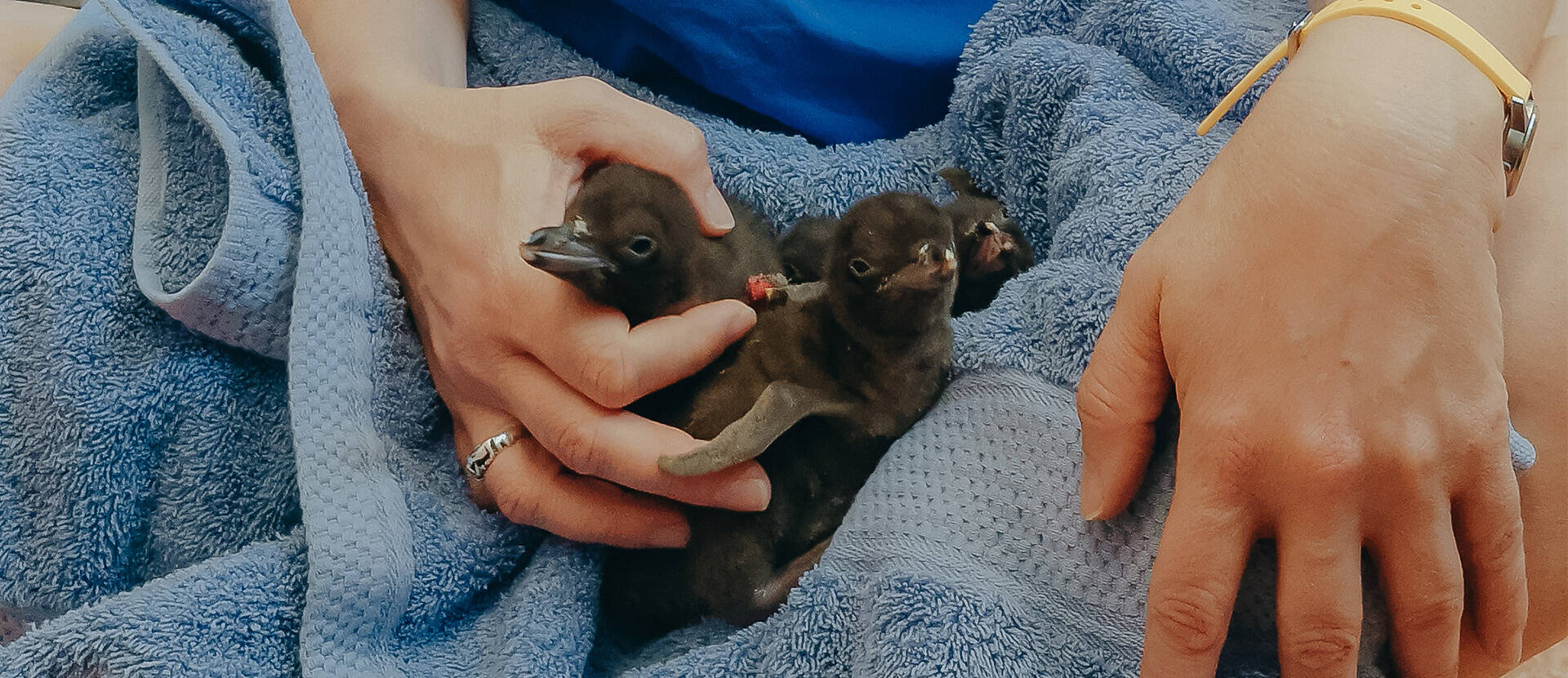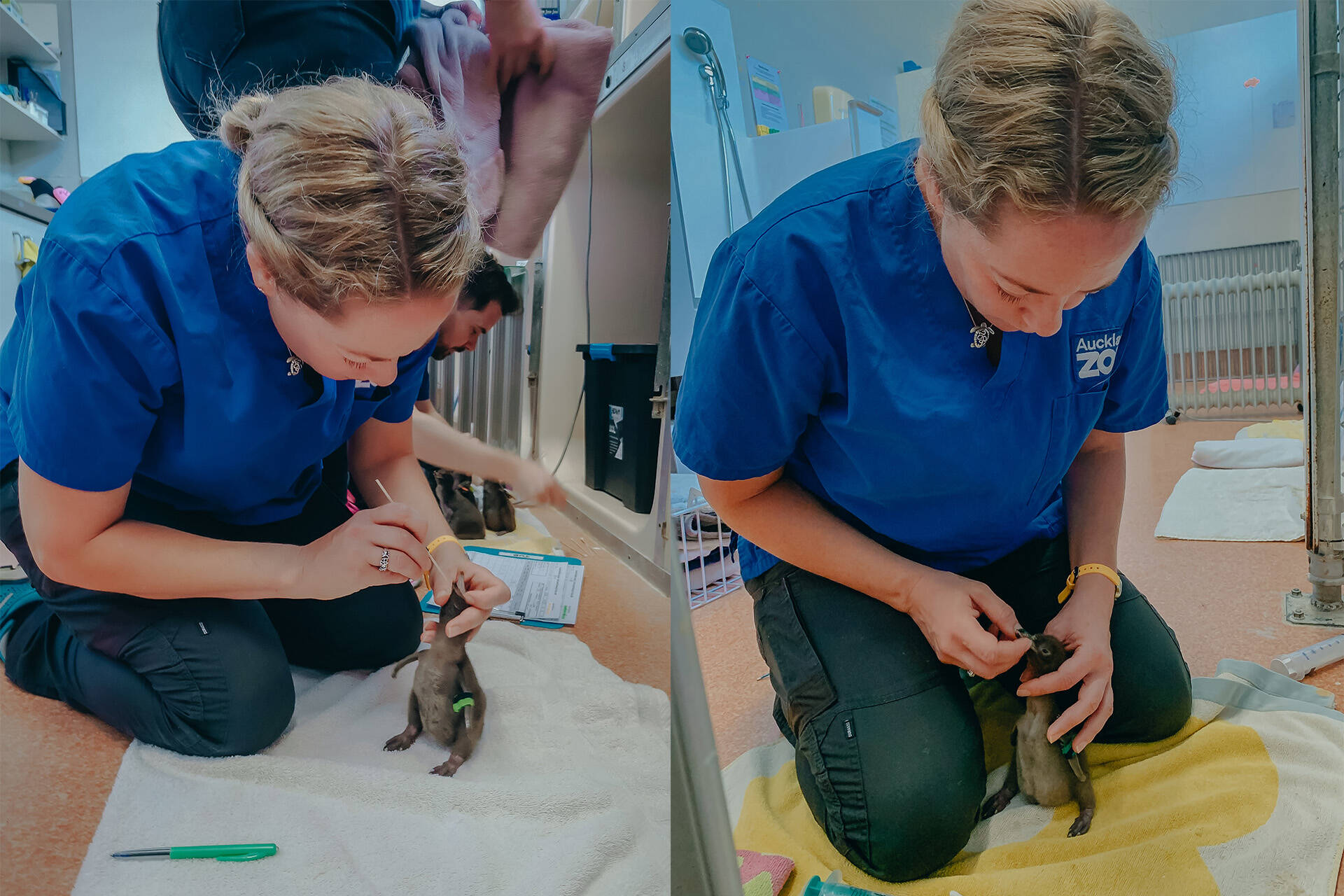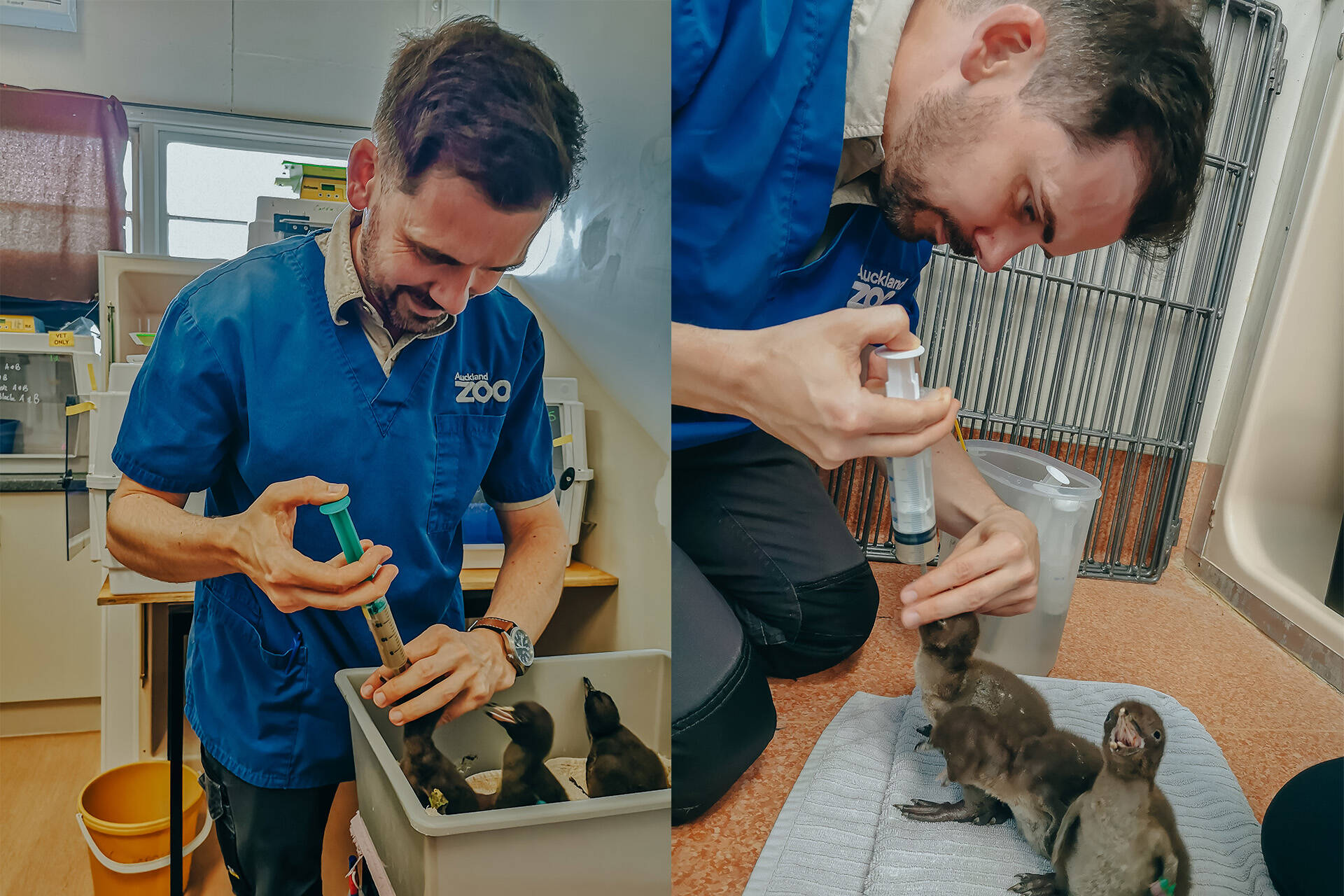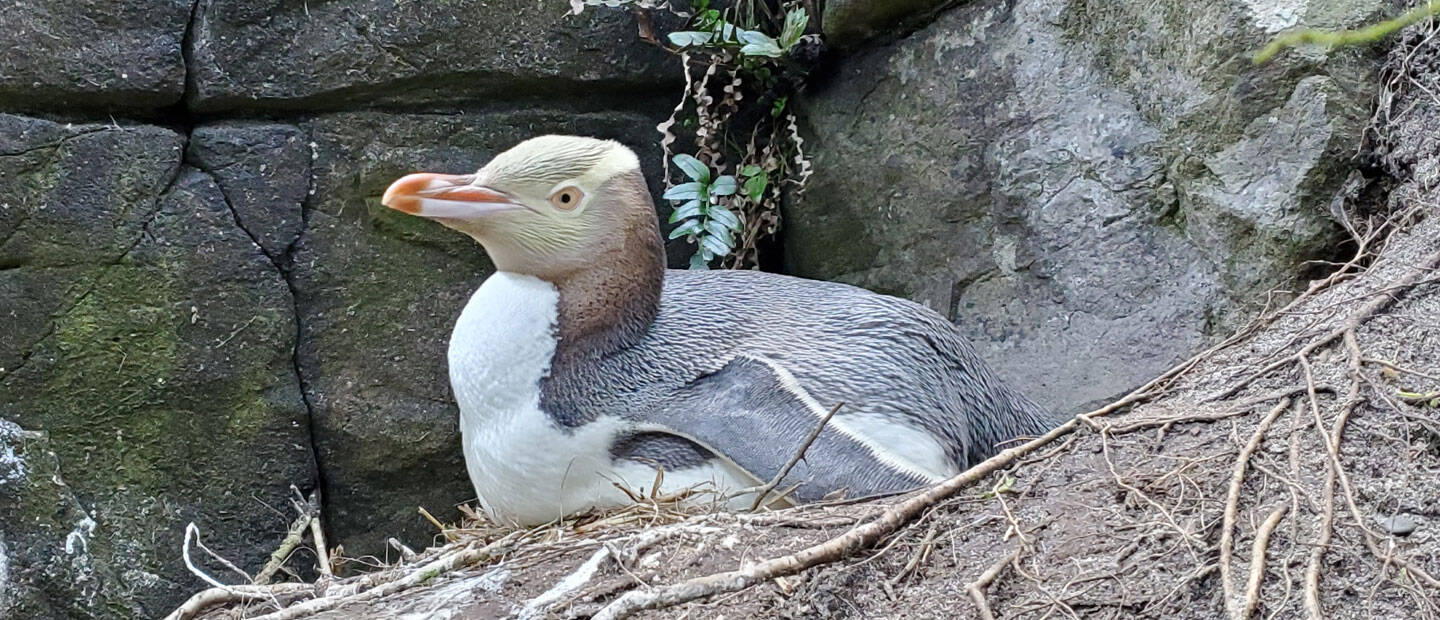“It was incredible to be able to slot into this slick, well run machine. Everything ran like clockwork which meant we could all focus our efforts on the care of the chicks,” explains Zoo veterinary nurse Celine Campana.
Recently, a few of our kaimahi ventured to The Wildlife Hospital in Dunedin to help with critical hoiho (yellow-eyed penguin) conservation efforts. Unfortunately, this endemic and rare bird species is severely impacted by two serious and frequently deadly diseases in the wild - Diphtheritic stomatitis (DS) and Respiratory distress syndrome (RDS), but early intervention has a huge impact on hoiho chick survival.
Newly hatched chicks or eggs are collected by Department of Conservation rangers and the Wildlife Trusts (The Yellow-eyed Penguin Trust, The Otago Peninsula Eco Restoration Alliance and Penguin Rescue) from the Catlins up to North Otago and brought to the Wildlife Hospital for care and treatment. This initiative has taken place for the past three years and has seen incredible results so far. Prior to these interventions, in a given breeding season roughly 30% of hoiho chicks naturally survived to fledging, yet with intervention, the chicks that come through Dunedin Wildlife Hospital have an over 90% survival rate!





